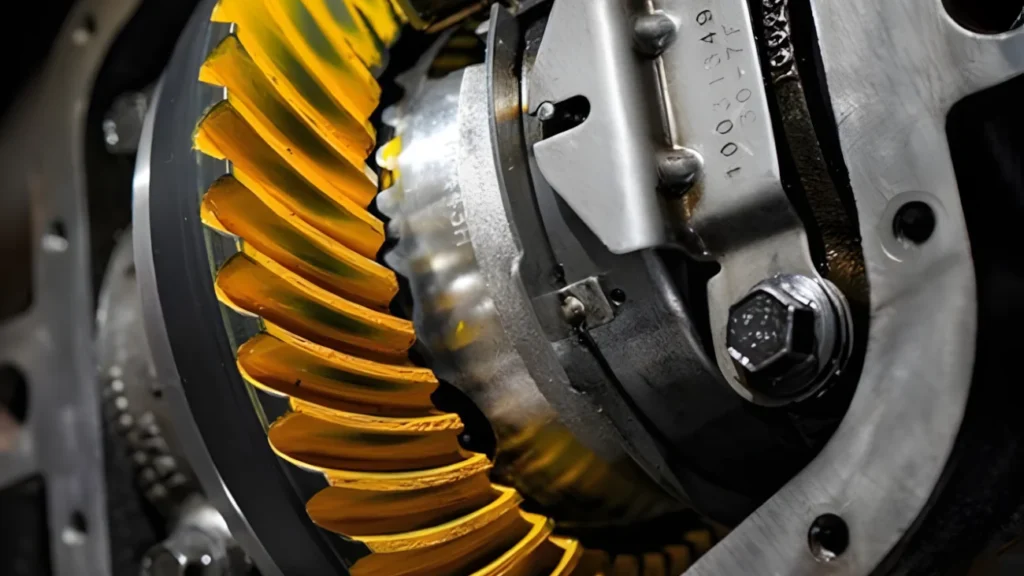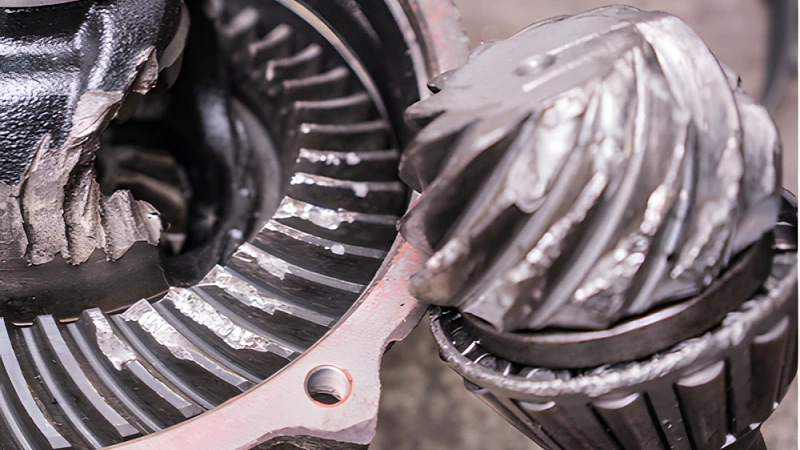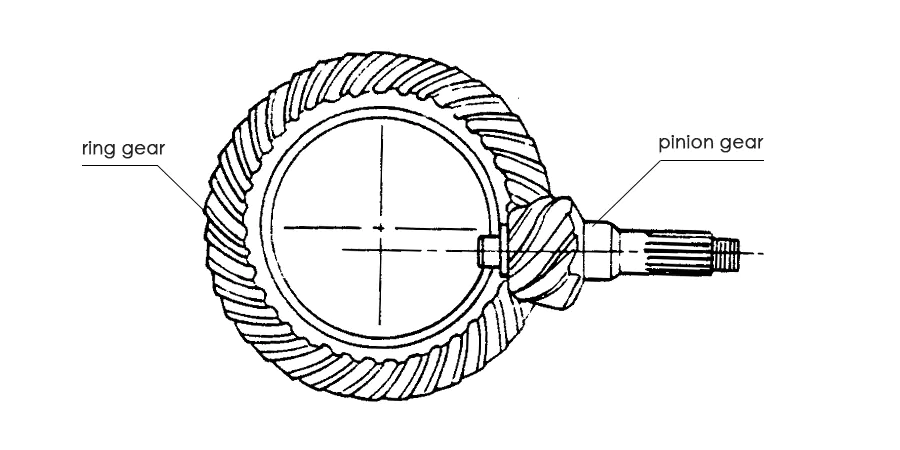When you replace the ring and pinion gears (also known as crown wheel and pinion) in your vehicle, whether for routine maintenance or upgrading your drivetrain for better performance, the break-in process plays a key role in ensuring the gears perform well over time. Proper break-in helps prevent excessive wear, reduces the chances of failure, and ensures smooth operation.
The process can differ slightly depending on the type of vehicle you’re driving, from regular daily drivers to pickup trucks, off-road vehicles, and even race cars. In this guide, we’ll explore how to break in your crown wheel and pinion gears, address common issues during break-in, and provide guidance on when to change your gear oil for the first time.

The Basic Break-In Process for All Vehicles
No matter what type of vehicle you’re driving, the basic principles of breaking in new ring and pinion gears or crown wheel and pinion gears are the same. The first step in the break-in process is to take it easy. During the first 100-200 miles (160-320 km), avoid heavy acceleration, hard braking, and high-speed driving. The goal is to allow the gears to mesh gently and wear in evenly. This phase is crucial for preventing undue friction or stress that could lead to premature failure.
Once the initial break-in is complete, you can gradually increase the load and speed. However, continue to avoid pushing the vehicle too hard during this phase. Gradually step up the driving intensity but keep it within a moderate range. Avoid towing heavy loads or driving in extreme conditions until the crown wheel and pinion gears are fully settled.
Special Considerations for Pickup Trucks
Pickup trucks, especially those used for towing or heavy-duty tasks, require more attention during the break-in process. The additional strain placed on the drivetrain means it’s even more important to break in the ring and pinion gears properly.
During the first 100-200 miles, avoid heavy towing or driving through harsh off-road terrain. This allows the crown wheel and pinion gears to wear in gently without experiencing undue stress. After the break-in period, you can gradually introduce light towing or challenging terrain, but make sure to ease into these tasks to avoid overheating the gears or causing excessive wear.
As the break-in progresses, it’s important to monitor the temperature of the differential regularly. Pickup trucks that are used for heavy-duty work are more prone to overheating, so always ensure the gear oil is filled to the proper level and that it’s free from contaminants.
Off-Road Vehicles: A Tougher Break-In
Off-road vehicles face unique challenges. They are often subjected to high-impact loads, steep inclines, and rugged terrain, making it essential to approach the break-in process carefully.
In the first 100-200 miles, avoid aggressive off-roading, such as rock crawling or deep mud driving. Focus on less demanding trails that allow the crown wheel and pinion gears to settle without subjecting them to extreme shocks. As the break-in period ends, you can begin tackling more difficult terrains, but do so gradually to prevent damaging the gears.
Off-road vehicles also require frequent checks on the gear oil, as dirt and debris from off-roading can contaminate it, reducing its effectiveness. Be sure to monitor the oil level and quality, and change it as needed to keep the gears running smoothly.
Race Cars: A Different Approach to Break-In
When it comes to race cars, the break-in process for ring and pinion gears (or crown wheel and pinion) takes on a different approach due to the high-performance nature of the vehicle. Racing environments put extreme loads on the drivetrain, which means the break-in process needs to account for high-speed driving, quick acceleration, and sharp turns.
The initial break-in for a race car is often shorter than that of regular or off-road vehicles. However, the focus is still on allowing the gears to mesh properly without overloading them. For the first 50-100 miles (80-160 km), it’s crucial to avoid full-throttle acceleration and excessive cornering forces. Instead, you should gradually build up to higher speeds and more aggressive driving conditions. This helps the crown wheel and pinion gears wear in while minimizing the risk of overheating or excessive friction.
Unlike regular road vehicles, race cars will be pushed to their limits more quickly after the break-in. As a result, it’s important to monitor the gear oil regularly, especially after the break-in period, as the extreme conditions of racing can quickly degrade the oil and introduce contaminants into the differential.
Common Break-In Issues and Solutions
As your ring and pinion gears or crown wheel and pinion gears wear in, you may encounter a few common issues. However, many of these problems are temporary and should resolve themselves as the gears fully mesh. Here are a few to watch out for:
Gear Noise or Whining
It’s normal to hear some whining or gear noise as the ring and pinion gears mesh during the break-in process. While some noise is expected, excessive whine can indicate improper alignment or insufficient lubrication. If the noise persists after the break-in period, it’s a good idea to check the backlash (the clearance between the gears) and confirm that it’s within the manufacturer’s recommended range. You should also ensure that the gear oil is clean and filled to the proper level.

Overheating
Overheating is a common issue for vehicles with heavy-duty applications like pickup trucks, off-road vehicles, and race cars. Excessive heat can cause long-term damage to the crown wheel and pinion gears and bearings. To avoid overheating, monitor the differential temperature and avoid heavy towing or aggressive off-roading during the break-in period. If you’re using a race car, check the oil regularly and ensure it’s designed to handle the extreme heat generated by high-performance driving.
Vibrations or Shaking
If you notice vibrations or shaking, this may indicate an issue with the alignment of the ring and pinion gears or differential. It’s important to check the installation and make sure the gears are properly aligned and torqued to the manufacturer’s specifications. If the vibrations persist, it’s best to have a professional mechanic inspect the drivetrain.
When to Change Gear Oil for the First Time
Changing the gear oil after the break-in period is essential to remove any metal particles or debris that may have accumulated from the initial wear. For most vehicles, it’s recommended to change the gear oil after the first 500 to 1,000 miles (800-1,600 km). This ensures that the oil is clean and free from contaminants that could affect the performance of the gears.
For race cars, gear oil should be changed more frequently due to the extreme conditions experienced during racing. After the first 100-200 miles (160-320 km) of break-in, it’s important to perform a thorough oil change to flush out any metal shavings or particles that could damage the gears during high-performance driving.
Once the first oil change is completed, the frequency of future oil changes will depend on how the vehicle is used.
- For daily drivers, gear oil should be changed every 30,000 to 50,000 miles (48,000-80,000 km).
- For towing or off-roading vehicles, oil changes should occur every 15,000 to 30,000 miles (24,000-48,000 km).
- For race cars, gear oil should be changed more frequently—every 500-1,000 miles (800-1,600 km) depending on the intensity of the racing conditions.
Final Thoughts
Properly breaking in your new ring and pinion gears or crown wheel and pinion gears is essential for ensuring the longevity and optimal performance of your vehicle’s drivetrain. Whether you’re driving a daily commuter, a heavy-duty pickup truck, an off-road vehicle, or a race car, following the correct break-in procedures will prevent unnecessary wear and help your gears last longer. By gradually increasing the load, monitoring the differential temperature, and changing the gear oil at the right time, you can ensure that your gears will function smoothly and efficiently for years to come. Each vehicle type requires a slightly different approach, but the core principles remain the same: take it easy during the break-in, listen for any unusual noises, and change the oil at the appropriate intervals to keep your gears in top shape.



